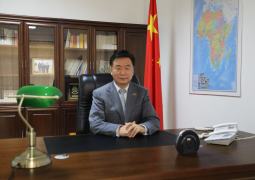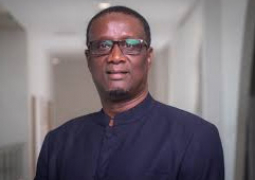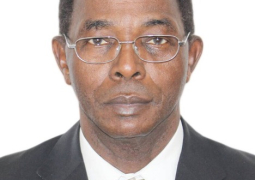Title of Thesis: The Colonial Era in the Gambian Secondary School History Teaching Bachelor thesis, Teacher Education, 61-90 p
Author: Josefine Pedersen, Vaxjo University
Date published: 2007
(Note: the reference are deleted)
Excerpt
The transformation of the school system in the Gambia
In this part, I will focus on the change in the school systems in the Gambia during the last decades. In doing this, I will use policy documents issued by the Department of State for Education and the earlier presented study by Cati Coe, Learning Dilemmas in African Schools- Youth, Nationalism and the Transformation of Knowledge.
Cati Coe discusses a different kind of dilemma which exists in African schools. Her fieldwork in Ghana is the main source of this book. Her study examines the production of national culture in Ghana through schools. Furthermore, I will compare the transformation of the school culture in the Gambia with Coe’s results.
Over the years, the Gambian education system has undergone a series of significant changes, from partial structural reforms to a radical transposition of many of its aspects. These guidelines are directed both from national and international contexts. The interventions have transformed the system according to national priorities and visions. The quality and relevance of education is one of the major challenges of The Gambia’s education system.
The President of today in the Gambia, Dr Alhaji Yahya A.J.J. Jammeh, has committed himself to the development of the Education system in the Gambia. “A Responsive, Relevant and Quality Education for All Gambians” is a mission statement developed by the Department of State for Education in the Gambia and by the President.
To transform The Gambia into a financial centre, a tourist paradise, a trading, export-oriented, agricultural and manufacturing nation, thriving on free market policies and a vibrant private sector sustained by a well-educated, trained, skilled, healthy, self-reliant and enterprising population, and guaranteeing a well-balanced eco-system and a decent standard of living for one and all, under a system of government based on the consent of the citizenry.”
The president here describes a number of goals for a modern society comparable to Western European states. It is easy to understand his interest for a good education system as that is part of the necessary condition for his objectives.
The quotation above corresponds with a part of Cati Coe’s study, as she implies that African countries have been influenced by Ghana when they integrate culture into their school curricula.
Every Ghanaian needs a sense of cultural identity and dignity, Ghana has a cultural heritage of individual ethnic cultures and promoting a unified Ghanaian culture will ensure a sense of national identity and make the nation stronger and more unified. This will help the pupils to be proud of themselves and their society. A proper cultural identify will help free our minds from dependency on the cultures of other people.
“Teachers see the cultural studies syllabus, in particular, as a top-down reform, imposed from above by government bureaucrats”. Learning more about culture and its languages does not seem that interesting to Ghanaians. Instead, learning English and French seems more motivating because of the possibility of connections in an economic system.
According to Cati Coe, “Schools in Africa are associated with access to colonial power, entry into state employment, and the rejection of conventional ways of living”. For this reason, African states have inserted culture into school curricula and extracurricular activities as part of their rehabilitation and appropriation efforts.
Education development in the Gambia took place above all and started in 1988. Less than 50% of Gambian children went to school then. Therefore, the main aim was to increase the number of pupils. The government improved and concentrated on three different issues: access, quality and relevance. According to the President of the Gambia, the Gambian citizens have a responsibility of education, “They should ensure their shared values in defence of a common interest”, according to the President.
The first ten-year policy (1976-1986) was limited in several aspects. Thus, education was provided for the succeeding fifteen-year policy (1988-2003). This policy concentrates on how the basic learning needs of all can be met. The government of the President wants to reform the education system to ensure quality, relevance and justice. This statement has resulted in significant accessibility to relevant basic education. Therefore, the last decade principally witnessed an unparalleled system expansion at all levels, from early childhood education to tertiary and higher education.1995, a Review of the Education Policy took place. One of the main issues concentrated on the lack of adequate trained teachers. This dilemma affected the quality of education in the Gambia.
Moreover, the government and the schools work side by side since the state controls the citizens and therefore the pupils at the schools. Furthermore, the state's expansion is linked to mass education expansion. Coe says this is particularly common in postcolonial states like Ghana and the Gambia. Because of the expansion of mass education, children spend more time in school. Schools are one of the most continual zones of contact most people have with the state, and they become a way for the state's efforts to reach and shape its population. “In the late nineteenth century, schools helped turn ‘peasants into Frenchmen’”.
Mass education is a product of the West as a reason to move in the direction of greater progress. The transformation of the country’s children into good citizens will be an important issue in Africa. Therefore, this type of education came into focus when the structure of mass education was closely connected to the nation's creation. Coe implies, “... hopes to produce a type of student who is ‘Western’ in his intellectual attitudes towards life...”
Qualified teachers are an issue in the Gambia, particularly in rural areas. Poor housing conditions and inadequate stimulations for teachers are factors responsible for the poor maintenance of trained and qualified teachers in rural areas. It is a disadvantaged and marginalised situation for the teachers in this area, and this results in a situation where the best teachers are only accessible in the urban area. A large number of teachers are unauthorised in the Gambia; this will provide effects on the quality of the education. According to Thelin, “Many teachers look for another kind of job”. According to Cati Coe, the described situation above is as in Ghana.
In the Gambia, another education policy started in 2004. This 2004-2015 policy focuses on ensuring that the right to quality education for all is upheld and that “Education for All” is achieved. The main issue in this policy is to eliminate gender and regional problems. “Eliminating poverty, enhancing quality living and developing a learning society forms the keystone of this policy”.
The Department of State for Education in the Gambia has produced several models and institutions for developing education. The educated-related Millennium Development Goals (MDGs), “Education for All” (EFA) goals, the New Partnerships for African Development (NEPAD) education-related goals, and the country’s Poverty Reduction Strategy Paper (PRSP) are developed to allow educational opportunity and improve the effectiveness of education at all levels. “Rethinking Education for Poverty reduction”, was the theme of the policy consultations. Thus, the background of this policy seeks to improve the country's human capital by reducing the number of people living below the poverty line.
The primary goal of education development is to bring more Gambian children to school. Nevertheless, far more wealthy households in society, compared to poorer households, register more children in school. Thus, the rich benefit disproportionally more from government spending on education than poor households. The rich 20% of households receive D460 per primary school-age child, 7-12 years old. In poor households, they receive D325. This follows from the share of the school-aged population per household. Household costs on education show the amount to which the burden of paying for education weighs more heavily on the poor.
According to the Department of State for Education in the Gambia, the primary goal has succeeded as the number of pupils in schools in the country has increased over the years. This is caused by equitable access to basic, senior secondary, tertiary and higher education, regardless of gender, age, religion or disability. Basic education is free and compulsory in all government and grant-aided schools. Therefore, user fees will be abolished at this level. The increasing enrolment will depend on children from lower-income groups. The private cost of education is considered a barrier to attending school. Therefore, government financial support is still in favour of the higher-income groups. Also, the cost per student at a lower basic level has increased from D515 to D565. Three different levels, grades 1-6, 7-9, and 10-12, pertain to the Gambian school system. The last mentioned level will be categorised as the Swedish Gymnasium, 16-19 years old.
Cati Coe implies that the situation for the students is not unchallenging. Most of the pupils in secondary school have hope of progressing to university. Because of different reasons, the students cannot finalise this process. The main cause is exam failure. You cannot access the University if you have not undergone the exams. Thus, many classes are supposed to be a tool for passing the exam. During colonial times, the school level above, secondary school, created a small elite. Later on, at the same time, when the number of secondary schools increased, the distinction between these types of schools became the new assess of elite status.
The stipulation of education for girls is also an improved goal demanded by the President. Moreover, the number of female students has increased, a positive trend according to the Department of State for Education. In upper basic and senior secondary levels, there are still fewer girls. The cost concern is the main barrier to this issue. To solve this problem, the government provides the Scholarship Trust Fund and the President’s Empowerment Girls Education Project (PEGEP) to give the girls the opportunity to access secondary schools. The scheme will cover the cost of uniforms and stationery for disadvantaged girls in rural areas. The Gambiagrupperna claims, "If you educate a man, you will educate one individual. If you educate a woman, you will educate a whole nation.”
Access to textbooks is an issue in the Gambia. They have been improved and are now more relevant for the Gambian school teaching. A further goal is presented, that each child have access to a textbook at Primary Level, and they are for free. However, according to my own experiences in the Gambian school teaching, the students have to pay for the textbooks at the secondary level, and not everyone can afford this amount. Therefore, the teacher will make a summary of the current area and write these summarised comments on the blackboard to help his or her students.
Different guiding principles have been worked out in relation to education in the Gambia and they belong to the content of the 2004-2015 policy. Two guiding principles are as follows, “Non-discriminatory and all-inclusive provision of education underlining in particular, gender equity and targeting of the poor and the disadvantage groups”, and “Respect for the rights of the individual, cultural diversity, indigenous languages and knowledge”. Furthermore, three of the basic aims of the education policy are: “promote a broad-based education at the basic level for lifelong learning and training”, “create an awareness of the importance of peace, democracy and human rights”, and “promote a sense of patriotism: service, loyalty, integrity and dedication to the nation and humanity”.
Secondary education in the Gambia will maintain quality education as well. Therefore, SSS (Senior Secondary School) education will be expanded. Focus will be on the elimination of gender disparities. Several institutions and organisations, for instance, NGOs, will be encouraged to participate in establishing SSS. Education at this level follows a three-year course, 10, 11 and 12. In grade 12, the students undergo the West African Senior Secondary Certificate Examination (WASSCE). Moreover, the SSS curriculum contains guiding principles for this education level. The main principle prepares students for higher education. A teaching syllabus will work as a complement to learning, and it will harmonise with the syllabus at the upper basic level.
The curriculum in the Gambia designates its quality and relevance. “The curriculum will emphasise the development of the understanding of applying knowledge, problem-solving skills, manipulative skills, good citizenship and environmental education across all levels”.
I have shown how the Gambian state has invested in the education sector to create the foundation for a modern society. This process will continue for a long time, and several limitations are obvious. The most restrained limitation is the cost issue. Still, the Gambia is one of the poorest countries in the world, wherefore the population has difficulties undergoing developments in the education sector.




